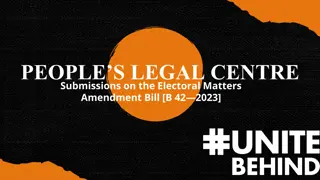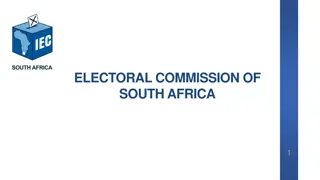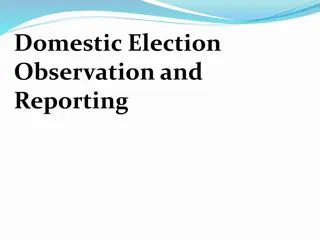Understanding Electoral Reforms in India
Electoral reforms in India are crucial for ensuring free and fair elections, which are fundamental to the success of democracy. This article delves into the need for electoral reforms in India, discussing issues such as money power, muscle power, criminalization in politics, and the misuse of official machinery. It highlights the challenges faced by the Indian electoral system and the importance of addressing these issues to strengthen democratic processes.
Download Presentation

Please find below an Image/Link to download the presentation.
The content on the website is provided AS IS for your information and personal use only. It may not be sold, licensed, or shared on other websites without obtaining consent from the author. Download presentation by click this link. If you encounter any issues during the download, it is possible that the publisher has removed the file from their server.
E N D
Presentation Transcript
Electoral reforms in India Kaushik Das Assistant Professor Department of Political Science Government General Degree College, Keshiary
What is Electoral Reforms? 1. Electoral reform is the change or improves the electoral systems of a particular country. 2. In a democratic country elections are the integral part of politics and hence free and fare elections are mandatory for the success of democracy. 3. Many obstacles may come during the election process and to remove these obstacles we require electoral reforms in the electoral system.
Why do We Need Electoral Reforms in India? The first three general elections (1952-62) in our country were accepted by and large free and fair, because it is the Congress party which rule both at the centre and the state level. The distortion in its working appeared for the first time in the fifth general elections, 1971 and multiplied in the successive elections especially those held in eighties and thereafter. Since then Indian electoral system suffered from serious maladies such as muscle power in elections, violence, misuse of government machinery etc. use of money and casteism, poll
Constraints in the Electoral System in India. Money power In each constituency, a prospective candidate has to spend millions of rupees towards campaigning, transport, publicity and other essential items of election campaign. The gap between the expenses incurred and legally permitted is increasing over the years. Muscle Power- use intimidation, booth capturing are mainly the products of muscle power and are prevalent in many parts of the country like Bihar, UP etc. and is slowly spreading to rest of India. of Violence, pre-election
Contd.. Criminalisation criminals are like two sides of the same coin and are mainly responsible for the manifestation of muscle power at elections. Politicization of criminals: criminals enter into politics to gain influence and ensure that cases against them are dropped or not proceeded with. The political parties field criminals in elections for fund and in return provide them with political patronage and protection. of politics and politicization of
Contd Misuse complained that the government in power at the time of election misuse official machinery to improve their candidates election prospects . The misuse of official machinery takes different forms, such as use of government vehicles for canvassing ,advertisements at the cost of government and public exchequer highlighting their achievements, disbursements out of the discretionary funds at the disposal of the ministers, etc. which gives an unfair advantage to the ruling party at the time of elections. of Government Machinery: It is generally
Different Committees on Electoral Reforms in India
Major Electoral Reforms in India before 2000 Introduction of Model Code of Conduct in 1971 before 5thLok Sabha elections. Lowering of Voting Age from 21 years to 18 years (61stConstitutional Amendment Act, 1988). Introduction of Electoral Photo Identity Card (EPIC) , 1993 by former CEC TN Seshan in 1993 Introduction of Electronic Voting Machine (EVM). It was first used in 1998 during the State elections of Rajasthan, Madhya Pradesh and Delhi.
Major Electoral Reforms in India before 2000 Fresh election in case of booth capturing. The effective campaigning period: The gap between the last date for withdrawal of nomination and the polling date has been reduced from 20days to 14 day. Prohibition with respect to Going Armed in a Polling Station
Reforms after 2000 Ceiling on election expenditure Ceiling on election expenditure for a Lok Sabha seat has been increased to 40 lakhs in bigger states and it varies between16 to 40 lakhs in other states and union territories. Voting through postal ballot allows government servants and certain other class of persons to vote via postal ballot following the Election Commission s consent. Awareness Creation- to encourage more young voters to take part in the electoral process. The Government of India has decided to celebrate January 25th of every year as National Voters Day . It started from January 25, 2011 to mark Commission s foundation day.
Reforms After 2000 Declaring of criminal antecedents ,assets etc by the candidates and declaring false information in the affidavit is now punishable with imprisonment up to 6 months or fine or both etc. an electoral offence In 2013 the Supreme Court had directed the EC to provide the NOTA option (NONE OF THE ABOVE) on ballot papers and EVMs.
Conclusion The ECI though have taken some measures for restricting the entry of the criminals in the elected bodies but in spite of this, almost all the political parties often give tickets to the tainted candidates in the elections and these candidates sometime win the election as well which is very alarming. To cleanse politics from the criminals we need electoral reforms, we need awareness among the voters, we need better technology for polling purpose and we need to replace the FPTP system with either proportional representation or mixed system. Finally if all these measures as suggested above are adopted in the near future then we may have a better electoral system in India.
References Kaur, Amandeep, (2009) Electoral Reforms in India Problems and Needs 1989- 2009, Chandigarh, Unistar Books Pvt. Ltd. Kaur, Sumandeep, Electoral Reforms in India: Proactive Role of Election Commission , (www.mainstreamweekly.net/article 1049.html). Kumar, Sanjay, (2002). Reforming Indian Electoral Process , EPW, Vol.37, No.34. Law Commission of India 177th Report on Reform of Electoral Laws, May, 1999. Le Duc, Lawrence, Niemi, Richard G. and Norris, Pippa, 2002. Comparing Democracies 2: New Challenges in the Study of Elections and Voting , New Delhi: Sage Publication. Sastry, Trilochan, 2014. Towards Decriminalisation of Elections and Politics , Economic and Political Weekly, Vol. XLIX, No.1 (January, 4, 2014). The Election Commission of India,(2004). Proposed Electoral Reforms , New Delhi: Publication Division of Election Commission of India. The Ministry of Law and Justice, Legislative Department Govt. of India,(1990). Dinesh Goswami Committee Report on Electoral Reform , New Delhi. The Ministry of Law and Justice: Legislative Department Govt. of India, (2010), Background Paper on Electoral Reforms , New Delhi.
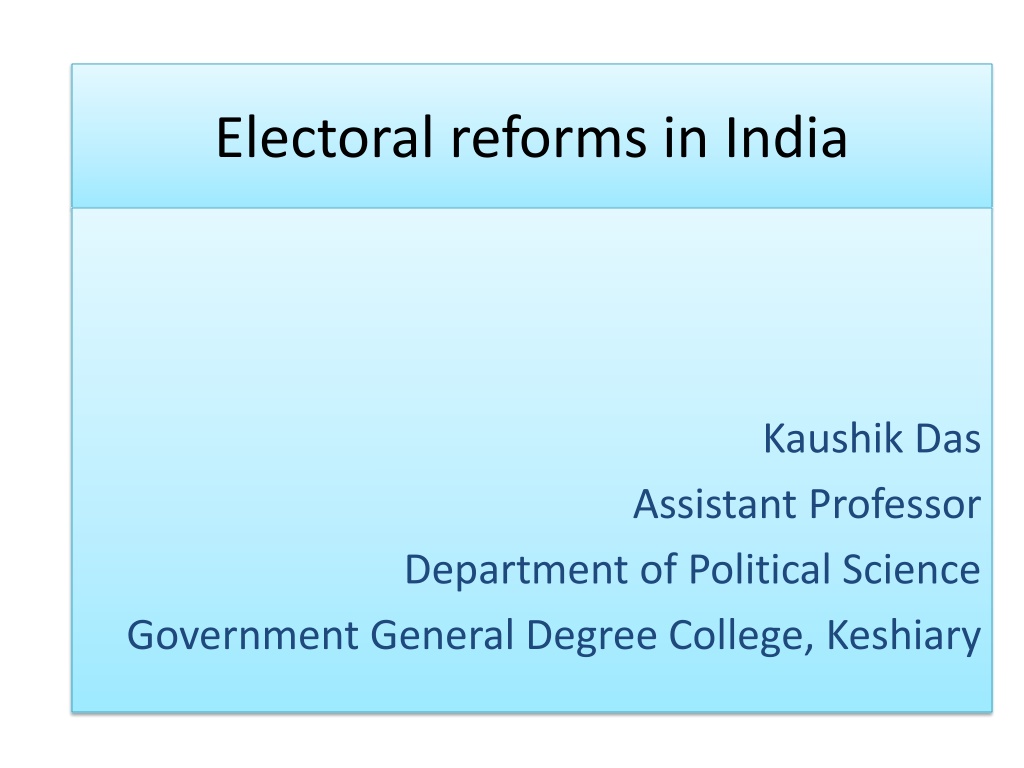

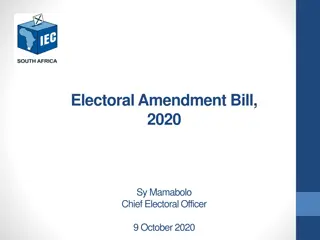


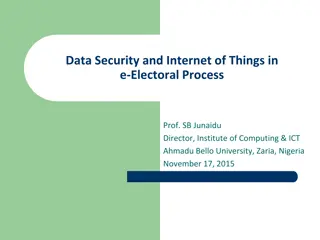

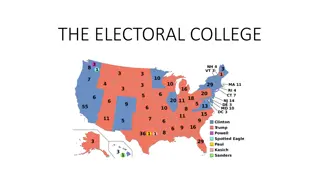

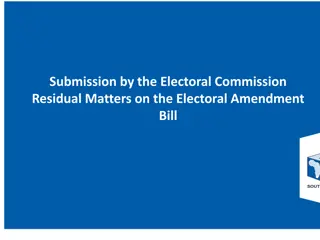
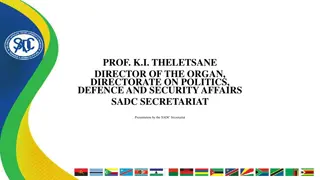
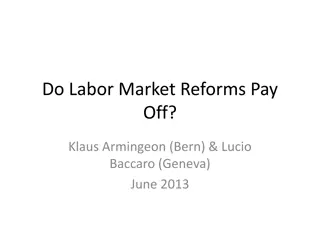
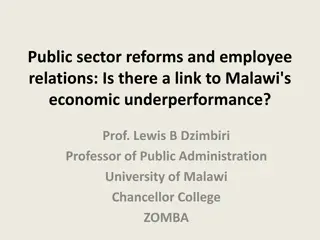
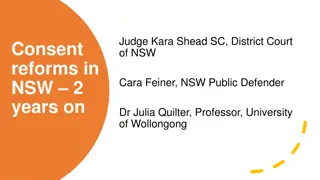
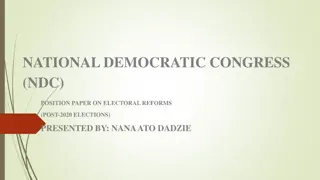
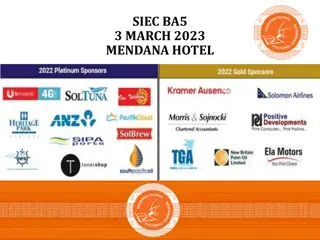
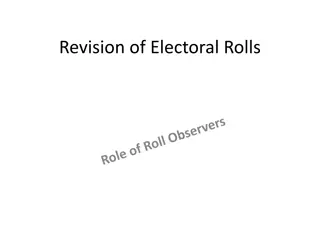
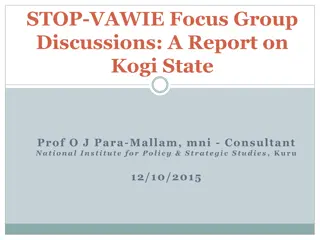

![RE: ELECTORAL MATTERS AMENDMENT BILL [ B42-2023]](/thumb/18837/re-electoral-matters-amendment-bill-b42-2023.jpg)
